Educating Steem on Medicine: A Snap Shot of Osteopathic Manipulation
Osteopathic Manipulation—some have heard of it, some may love it, and some may be “on the fence.” I think most who are "on the fence" have never actually had the techniques performed on them haha. In my last post, I discussed osteopathic medicine and its similarities and differences to the MD degree. For those that read it, congrats/thanks!
For those who did not get a chance, I invite you to check it out at this link: https://steemit.com/health/@tfeldman/what-is-osteopathic-medicine-the-field-i-study-and-how-it-is-different-from-the-traditonal-md
I am in my final year of medical school and am proud to be graduating with the degree, Doctor of Osteopathy (DO).
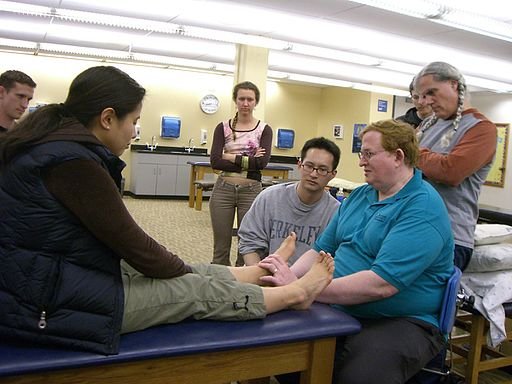
A brief summary of what was discussed in my first DO post:
Doctor of Osteopathy (DO degree) is much like the Medical Doctor (MD degree) in that the prerequisites to get into medical school are the same, and the medical knowledge taught is equivalent. That is why DOs and MDs share the same professions (family doctors, neuro surgeons, cardiologists, and so on) with the exact same medical rights in America and 40-some other countries. One big distinction: DOs are taught 200-500 hours of Osteopathic Manipulative Medicine/Treatment (OMM, OMT) while in school in addition to traditional courses. So while prescribing medications, performing surgical procedures, diagnosing disease, we also can use OMT as an additional tool to help patients.
PRETTY FREAKIN’ COOL! .....YEP
So let's get started....
Osteopathic Manipulation:
This is a very large topic. We are still, in the 4th and final year of medical school, having courses on it. I have one more final test to go in OMT!
I want to first mention that not all of the foundation will be covered. I’ll try to give a basic overview; in the future, I hope to write more on specific techniques, the scientific theory behind each technique, and what the current evidence based research shows. There will be less research and science in this post because I just want to give “you Steemers” an idea about the topic first.
History of Osteopathic Manipulation and Its Relevance Today:
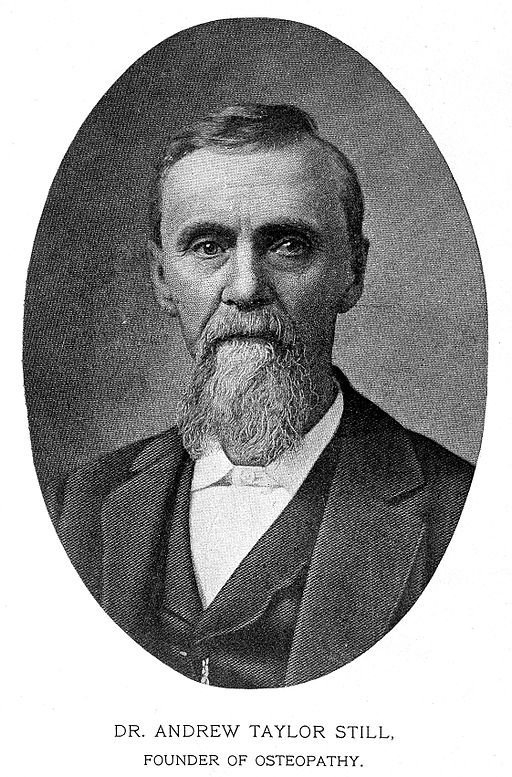
Dr. Andrew Taylor Still, who was originally an MD, established the first DO school in Kirksville, MO in the late 19th-century. He was frustrated with the lack of research and treatment being given by typical doctors of the time. At the time, some MDs were bloodletting patients and using counterproductive medications to treat disease. There was a lack of medical research at the time, and Still hypothesized that there were better ways. It was also a time before antibiotics were given to the public. (Ref 1)
Dr. Still’s father was also a MD physician, and as a boy, Dr. Still began to have personal observations of the power of the human body. At the age of ten, Dr. Still discussed a technique that he naturally used to alleviate headaches:
“One day when about ten years old, I suffered from a headache. I made a swing of my father’s plow-line between two trees; but my head hurt too much to make the swinging comfortable, so I let the rope down about eight to ten inches of(f) the ground, threw the end of a blanket on it…and used the rope for a swinging pillow. Thus I lay stretched on my back, with my neck across the rope…got up in a little while and the headache (and nausea) gone.” (Ref 1)
He knew nothing of anatomy at ten, but he started using trial and error. What worked and what didn’t. Dr. Still became a master of anatomy, and he developed many osteopathic techniques. His technique at ten-years old could be seen as the “first” osteopathic manipulation.
Why would this crazy thing stop headaches and nausea???
I don’t know of a study that has validated this claim, but I can use my understanding of anatomy/physiology to hypothesize why. The vagus nerve (CN X) runs near the occipital-atlas (OA) joint and the C2 vertebrae. CN X has parasympathetic effects (which include nausea) all the way from the stomach to 2/3 of the large intestine.
If the swing was able to change the position of this nerve at the head/neck in any way, the irritation to it may have decreased. This could make his headache and nausea go away by decreasing parasympathetic activity.
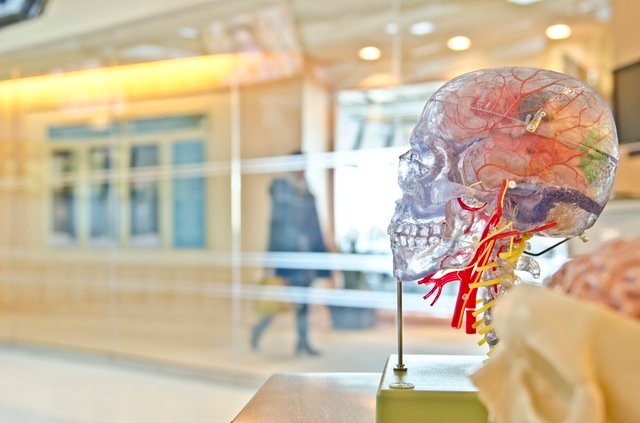
Our theories to our techniques have scientific theory to support its worth. In present day, studies are being administered to test the effectiveness of the techniques. Just like a medication, sometimes we know they help treat something, but often we only have theories as to why they help. For example, we know that the drug metformin is a great drug for Type II DM, but we only have theories on why it works. At the end of the day, its effect and caution of potential harm are the two most important factors. Although, the scientific theories of the mechanism are fun/exciting to think about. Also, learning theories also makes a medical student learn more about anatomy and physiology, which is vital when someone is acutely dying.
Osteopathic physicians believe in the power of medications, like all American doctors, but at the time of Still, there were not many that were effective. In present day, medications are an important part of management, but there are still applications where osteopathic manipulative treatment is a great adjunct, or sometimes, all that is needed.
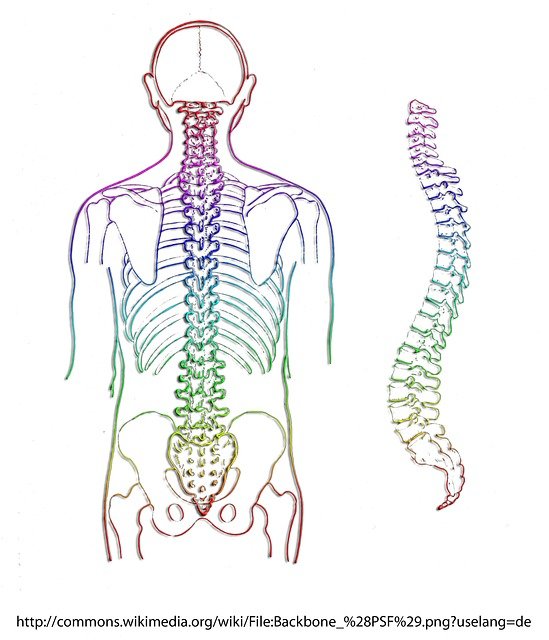
Osteopathic techniques are not “magical,” they are “practical.” If someone has cancer or diabetes, medications are needed to treat those individuals. However, OMT can be used as an adjunct to relieve some pain. A patient with an upper respiratory tract infection (URTI) can receive OMT to help with lymphatic drainage and hopefully feel better days earlier. A person who was working in the yard and “pulled a back muscle” may only need osteopathic manipulation, an anti-inflammatory, and a little time to recover. This could prevent them from taking “pain pills” and help prevent addiction to medications. Or maybe someone breaks an arm….well here pain meds, casting, and time is more appropriate haha... Maybe another person gets an MRI and has a slipped disk at the L5 region of the back. If the pain and nerve damage are bad enough, surgery may be indicated. However, if the patient would rather not have surgery and there is no major nerve damage, then OMT could be used to relieve that back pain….or maybe take that back pain from 8- (hurts a lot) to 3 (I can deal with this pain).
There are many scenarios where OMT is very useful today, and the above were just a few examples.
If time permits while seeing a patient, OMT can be used as an adjunct to treatment. In some cases, it may be all that is needed.
There are many more innovators such as Dr. Jones who have been great at developing OMT techniques. I could write posts on each of these individuals and techniques (which I may do for some). Due to this post already being LONG…I will focus on specific techniques in the future. Again, this is just an introductory post to OMT.
Four Basic Tenets to Osteopathic Medicine:
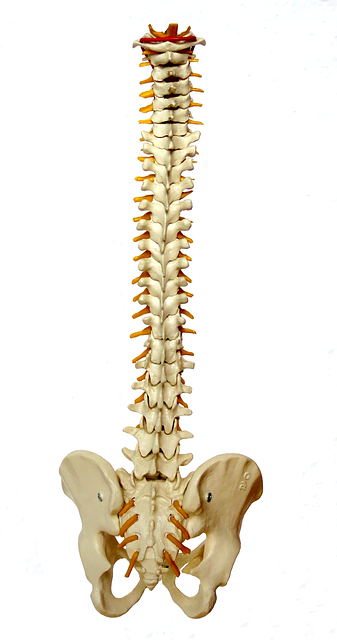
Before giving the basics of OMT, I wanted to share the tenets of our practice as physicians.
- The body is a unit
- The body possesses self-regulatory mechanisms
- Structure and function are reciprocally inter-related
- Rational therapy is based upon an understanding of body unity, self regulatory mechanisms, and the interrelationship of structure and function
(four tenets from Ref 1)
We can divide units into quarks, atoms, cells, and even things as big as the human body. Think about it—each of our organ systems work in harmony to keep life. The body is like a factory. Each part has a role to play. Biology supports this and the fact of homeostasis, our ability to self regulate. Structure and function are inter-related. For example, the skull is big enough and does not fully ossify until we are kids because the brain is growing. When a pathogen such as Zika causes microcephaly, there is an imbalance between the structure and function. All of these 3 points need to be considered when managing patients.
Basic OMT Principles:
What is Osteopathic Manipulative Treatment (OMT) ?
It is a variety of techniques used to treat somatic dysfunction.
Okay great, what is a somatic dysfunction?
It is the “impairment or altered function of related components of the somatic (body framework) system: skeletal, arthropodal, and myofascial structures and related vasculature, lymphatic and neural elements” (Ref 2)….In less scientific terms it is restrictions (like decrease range of motion due to scaring of tissue or inflamed tissue) or alterations (change in tissue texture, pain, asymmetry, and so on) of the body, which includes, muscles, tendons, ligaments, bones, and joints. Nerves, vasculature, and lymphatics may be altered by these restrictions and alterations, so OMT can help AID in restoring all of these components.
This leads me to the term TART:
Before treating a patient with OMT, you must look for objective physical exam findings that show that there is indeed, somatic dysfunction. TART is an abbreviation for “Tissues texture change, Asymmetry, Restriction (of motion), and Tenderness.” If you are looking at someones lumbar spine and notice more tense muscles on one side (tissue texture change), this will likely be asymmetric to the other side (although there can be somatic dysfunction on both sides so asymmetry is not a necessary characteristic). If the lumbar spine has trouble rotating to the left more than the right, then left rotation is “restricted” in range of motion. If you press on the paraspinal muscles, and the patient feels it is tender, well, that is an obvious finding.
…I hope this example shows a basic overview of how one could find somatic dysfunction in a person.
If a person has a somatic dysfunction, this could impact his or her function as well because structure and function are related. For example, the patient who cannot move his or her back to the left as well will have less functioning with movement.
There are many things I could discuss about the back such as Freyette’s rules of the spine, but that is a little irrelevant for an introductory post! However, the principles are guided by how the spinal vertebral processes will move when there is dysfunction. The patient should be moved in three different planes of motion (side bending, rotation, and flexion or extension occur in three different planes). Basically, we must have an understanding of proper anatomy to know what we are treating and how to treat. This is also why these techniques are handled by professionals. A lack of understanding of anatomy can cause more harm than good to a patient! My goal in these posts are not to have you “try these at home", but rather feel comfortable if you decide to have an osteopathic physician treat you.
Once an Osteopathic Doctor Finds Dysfunction, How do They Treat It?
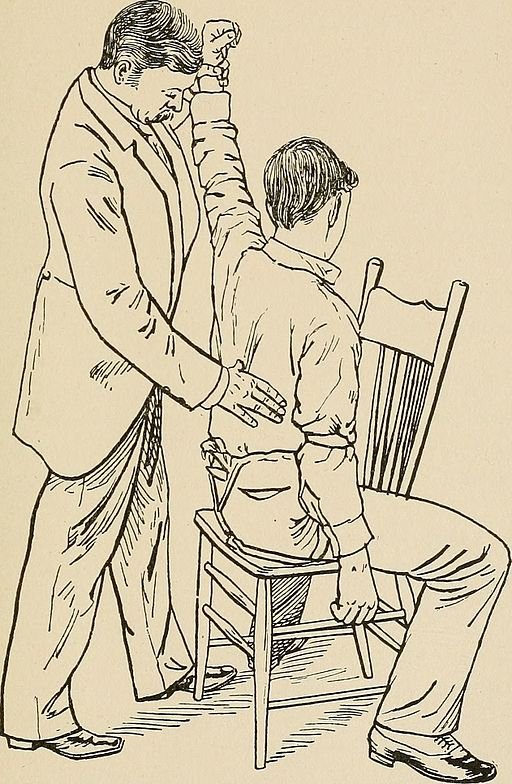
This again is more complicated than just techniques. The diagnosis is not just the TART, which we discussed above, but it is also if the dysfunction is something that happened recently (acute) or a ongoing problem (chronic). The TART findings will be different for these situations. The skin may be warm and very painful in an acute problem while colder and more fibrotic in an older problem.
More aggressive techniques into the barrier (restricted area) are generally better for chronic problems. “Lighter” more gentle techniques are preferred for more painful, acute problems like a pulled muscle. However, this will vary by physician and what the patient can tolerate. Any osteopathic technique can be very effective (some practitioners use mostly indirect techniques, which again, are extremely effective). Age of the patient is also a consideration…older patients generally are treated more gently with longer time between treatments, while younger patients can be treated more directly with shorter time between treatments (Ref 2).
What Kind of Techniques?
There are so many! I will just name a few that I love and use when I can.
Here are some...
a) Counterstrain: One of my favorite techniques and developed in the 1980s. It is used when a patient has a “tender point” in one of his muscles (what a massage therapist might call a “knot”). You press on the painful area and shorten the muscle and keep your finger on that specific spot. When you shorten the muscle, you ask the patient how much the pain has improved. The pain in that particular spot in the muscle should generally be reduced by at least 70 % to be effective. You then hold in the more comfortable position for about 90 seconds. This is a very safe and effective technique. The physician should be careful about other muscle groups during the exercise (if you shorten one muscle, you are stretching others!). I will make a special post on this technique
b) Myofascial Release: This can be into the restriction or away from the restriction. You essentially have to palpate the skin deep enough to feel the fascia and muscle fibers. You move the skin while palpating into or away from the restriction. Generally, the area starts feeling like it is “melting” because the fascia is being “released.”
c) Muscle Energy: One of my favorite techniques. This is a direct technique, but one that I feel comfortable using even in more acute situations. There is a type that uses antagonist muscles that is less aggressive as well. Essentially, you move the restricted area of the body towards the restriction and ask the patient to move the opposite way. When the patient tries to move the other direction, you match that strength in the opposite direction. So the patient is not actually moving but there is a resistive force. This is called an isometric contraction. I will make a post on this in the future.
d) HVLA (high velocity low amplitude): This is one of the most aggressive techniques. Basically, you move the area of the body into the restriction and then in the final moments move it even further in the direction of the restriction. Often, a “pop” is heard. I believe that chiropractors have a similar approach in techniques, but this technique is osteopathic in origin. It can often free up fibrotic tissue around joints and lead to an increase range of motion after the technique is performed. It also reflexively makes the muscle relax around the joint.
I am excited to be sharing information on osteopathic manipulation and medical topics in general. In future OMT posts, I will discuss specific techniques, there uses, my personal experience with them, evidence based research, and theories on why they work.
I would be happy to entertain any questions. Thank you for your interest in one tool I use in hospitals as a senior in medical school, and I look forward to entertaining any questions/ comments.
Thanks! Feel free to follow, and keep your eyes open for more posts on this topic!
...my photo!
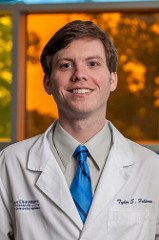
Sources
Ref 1) Foundations of Osteopathic Medicine – 3rd Edition, Chila-Editor, (Lippincott, Williams & Wilkins), 2010 (VitalSource)
Ref 2) A Comprehensive Review in Osteopathic Medicine, 3rd Edition. Robert G. Savarese (Known by many as the "Green Bible") It is not everything you need to know, but is a helpful guide for those unfamiliar with the techniques. Many use this when reviewing for tests as well.
* Photo 1 from early 20th Century: Link below: no source was needed but here is the link below: https://commons.wikimedia.org/wiki/File:Osteopathic_first_aids_to_the_sick_-_written_for_the_sick_people_(1906)_(14803334553).jpg#/media/File:Osteopathic_first_aids_to_the_sick_-_written_for_the_sick_people_(1906)_(14803334553).jpg
Photo 3: Just needed to attribute this source from Welcomeimages.org (UK based)...link below:
Edit: the most "direct link" I used would not work here. This link still provides the photo. Just scroll down the page about halfway.
Photo 7: No source was needed but here is the link, from 1898! :https://commons.wikimedia.org/wiki/File:Osteopathy_Complete_(1898)_(14776483481).jpg
*All other photos from pixabay.com and wikicommons (2nd photo) and no sources are needed.
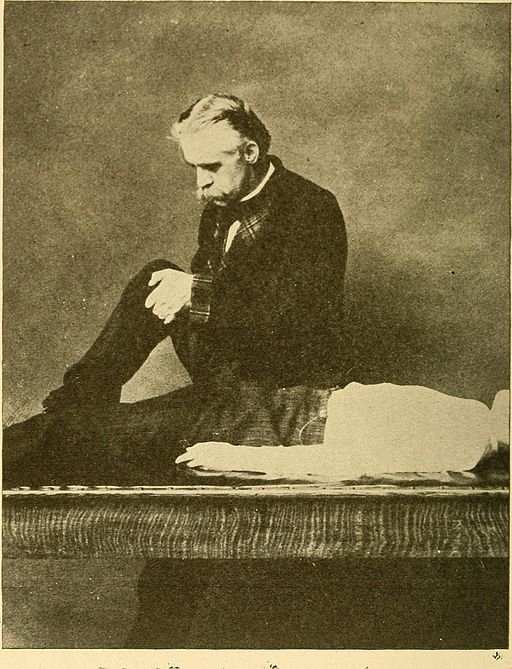
My question is similar to @cy21. What are the differences in training between a DO and a DC, as well as the differences in techniques? And what are the differences between someone who calls themselves just an osteopath, and a DO? Or are they the same? A chiro once told me that the difference is a philosophical one - that chiros manipulate structure to free trapped nerves, but osteos have more of an emphasis on structure for it's own sake. Would you say that is true?
Thanks for reading! Read my first post on DO to grasp the training compared to a MD....they are equivalent but distinct.
This link provides more on the differences between DOs and DCs
"The primary difference between chiropractors and osteopathic physicians is that D.O.s are fully trained physicians, entitled to practice in all states and in every branch of medicine. Both D.C.s and D.O.s are trained to take a holistic, wellness-oriented approach to patient care, using manipulation to remove impediments to the body's ability to heal itself. In practice, some osteopathic physicians use manipulation techniques frequently while others treat their patients through more conventional methods. Chiropractors depend primarily on manipulation, because their narrower scope of practice prevents them from prescribing medication or practicing medicine in the broader sense."
http://work.chron.com/osteopath-vs-chiropractor-6842.html
As far as techniques, I would need to study what chiropractors use more to compare. The techniques used in my article were designed by osteopathic physicians.
Hi @tfeldman,
Thanks for your fascinating post. Have you heard of ABC (Advanced Biostructural Correction)? In case you have not, here's a link to a descriptive website about the technique.
I am neither a D.O. nor an M.D., but I came across ABC around a decade ago. I tried to learn the method (but am not particularly skilled) but some friends of my did in fact learn to apply it with tremendously good results. One of them is now a professional practitioner of the technique. ABC has helped me personally to eliminate considerable chronic neck pain.
I mention it here as you may possibly find it of value in your career as a D.O.
Thank you! I have actually never heard of this. I will check it out!
I like the idea. It is similar in that structure is related to function. I would need to look more on the clinical research but the scientific theory looks sound.
That is quite cool. I've learned something like this from my father from early age. And while the results aren't magical, the sometimes do feel like magic.
And I am not talking pnly about pain alleviation. While I don't have a classic medical training I went through 288 hour course that is mandatory for massage therapy here in Russia.
His techniques were part classical Russian medical massage (which has quite a long and proven history), part acupressure, and part good knowledge of anatomy.
Sounds like some good healing power to me. The relationship you can build when someone trusts you is the one magical parts about it. The practical is that structural equilibrium=a more sound functional equilibrium.
Thanks a lot for sharing this! I am learning a lot :)
I like to share this information. Thanks for reading!
Is there any differences between osteopathic manipulation and chiropractic manipulations? Do manipulations weaken the ligaments?
The most honest answer: I would have to do more research on chiropractic manipulations to give you a better answer. However, Osteopathic physicians are medical doctors and chiropractors are not. I would guess that some of their techniques are similar to HVLA (mentioned in my post), but what other things they do I am not sure about. I know that all the techniques I discussed are original to osteopathy because they were designed by osteopathic physicians. I was having a discussion with a physical therapist, who knew many of our techniques! So I think other fields have been impressed with manipulation and have tried to incorporate our ideas. I have no problem with "alternate medicine" but I think osteopathic practices are some of the best because of the techniques, the medical research, and the ability to understand when a procedure is contraindicated or not contraindicated. I think it is a safe environment, and can be a great adjunct to many medical issues.
Another great perk is that osteopathic physicians can meet all your medical needs (at least in America). Diagnosing diseases, treating you with medicine (drugs), and can offer manipulation when applicable. If more time is needed for manipulation, a whole appointment could be designated for that type of therapy, while another visit could be to go over...for example... diabetes care, and the medications to prevent complications.
Nice post @tfeldman!
Minor Comment, your citation link for photo 3 shows up as a broken image and not the link at the bottom. Try formatting it like this [Citation]*(PlaceLinkHere) remove the star.
Thank you for showing interest. I just discovered this haha...I put an edit in there ;). The one photo source that needed a link was being a pain! Thanks for the heads up.
Thanks for reposting my article, much appreciated! Also, I did read the second part to your advice on linking sources. I will try to incorporate that in my next post. However, if I have a book source (print), and I don't have a website to link, where should I put it?. Many of my sources are print... (not the photos of course)
You could just have a works cited section at the bottom of your post and put the citation there. Are you on steemit.chat? Easier to talk about this stuff in the chat, my username there is the same as here.
This post has been linked to from another place on Steem.
Learn more about linkback bot v0.4. Upvote if you want the bot to continue posting linkbacks for your posts. Flag if otherwise.
Built by @ontofractal